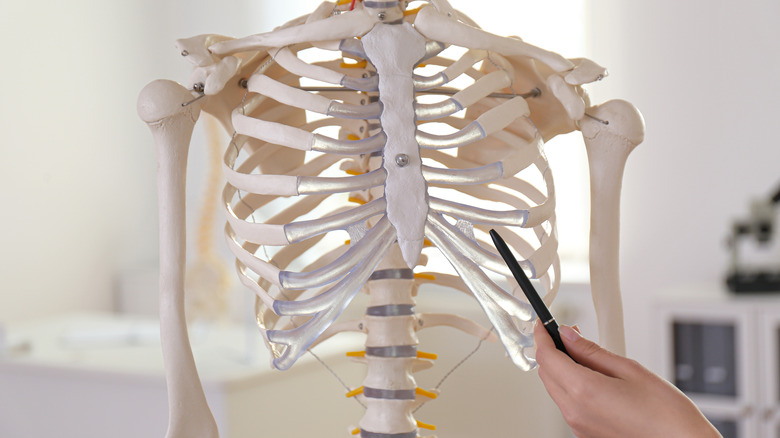The Real Reason Your Ribs May Be Hurting
Feeling pain in your ribs can be scary. After all, the ribs protect your heart, lungs, kidneys, liver, and other vital organs. If you're having pain under the right side of the rib cage, you might think that something is wrong with your heart or spleen. Pain in the left side of the right cage can indicate problems with your liver, right? Not really. Rib pain alone is rarely due to heart, lung, or liver problems.
AXA Health explains that it's possible to feel pain in the ribs following an injury or trauma. A pulled muscle and other similar injuries may cause rib pain, too. If you're having problems with your heart or lungs, you'll most likely experience several other symptoms. For example, heart disease may cause wheezing, coughing, shortness of breath, and tiredness in addition to rib pain. Gallstones, on the other hand, tend to cause nausea, vomiting, and fever.
The best thing you can do is to pay attention to your symptoms. Seek medical help if you experience severe chest pain, difficulty breathing, irregular heartbeat, chills, or yellowing of the skin and eyes. Meanwhile, here's what you should know about one of the most common causes of rib pain and what to do about it.
Rib pain may be due to costochondritis
Rib cage pain is often due to costochondritis, or costosternal syndrome. This inflammatory condition affects the area where your upper ribs connect to the breastbone. The pain can spread to the surrounding areas and worsen with certain movements, such as during exercise or when taking a deep breath, notes Healthline. Some people may also experience tightness in the chest or other symptoms that mimic a heart attack. Tietze syndrome, a similar condition, causes inflammation of the affected area, explains WebMD.
The cause of costochondritis remains a mystery. However, researchers agree that certain factors may contribute to the onset of this condition. Potential risk factors include severe coughing, strenuous exercise, allergies, viral infections, and direct trauma to the chest, says Healthline. The American Academy of Family Physicians (AAFP) estimates that about 13 to 36% of adults with acute chest pain have costochondritis. Those over the age of 40 are at higher risk. Tietze syndrome, on the other hand, tends to affect men and women under 40 years old.
Generally, costochondritis pain is treated with ice and heat therapy, physical therapy, or nonsteroidal anti-inflammatory drugs, according to the AAFT. In severe cases, doctors may prescribe corticosteroid injections. Depending on your symptoms, you may also need to take a break from exercise or avoid the movements that trigger pain. High-impact activities, such as running and jumping rope, can make things worse, so it's best to avoid them until you start to feel better.

